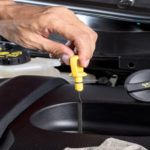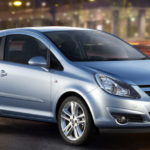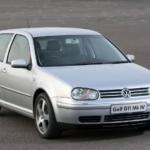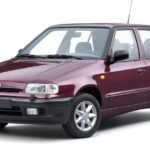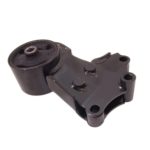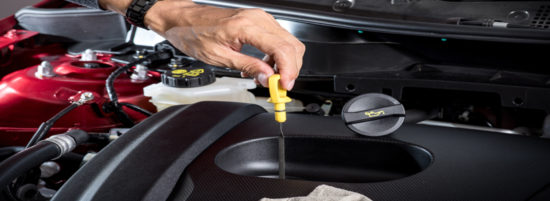Car Maintenance and Inspection
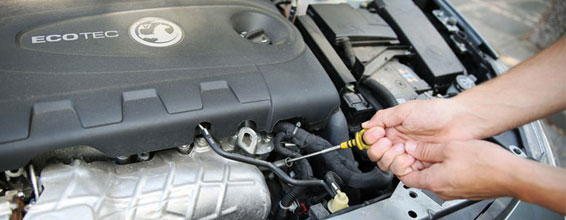
Car Maintenance
Using the reminder attached, you can determine the overall condition of your car. Check each item listed and note that a specific part is correct or needs servicing. Basically you should check everything that looks loose, worn, cracked, or if it leaks or does not work. Each of these items is briefly explained.
Luft on the wheel of a car
When the steering wheel moves back and forth, the clearance should be less than 10 mm. Higher backlash indicates worn ends of the clamp or too large clearance in the steering.
Brake pedal
The brake pedal should be firm and the operating stroke a few inches. If the pedal stroke is too large, it may indicate worn out brake linings or insufficient amount of oil in the brake system. A loose pedal can mean tightness in the cylinders or the presence of air in the braking system.
Handbrake
The parking brake locks the rear wheels and should keep the car on a low incline or prevent the vehicle from starting when the transmission is in first gear. When the brake is released, the rear wheels should rotate freely.
Siren (beep)
The siren as a safety feature should be checked frequently.
Windshield wipers
Wipers should be operated at all speeds and should be able to clean windows without leaving any marks. Replace the wiper blades if they are worn, cracked or chipped.
Windshield washer (glass sprayers)
When the sprayer is switched on, it should discharge a jet of water on both sides of the windshield.
Car mirrors (rearview mirrors)
The interior and exterior mirrors should be clean and free to move. Make sure the holders are tight.
Front and rear window heater
When the windshield heater is switched on, warm air should blow into the windshield. If the rear window defogger is on, the rear window should be warm.
Spare wheel and crane
The spare wheel and complete crane should be kept in the boot. Check the condition of the spare wheel and the pressure in it. (Note: if your spare wheel is not inflated, make sure you have a pump). Make sure you have all the parts for the crane and that it is correct. You should also keep a cross-mounted wheel mounting wrench in the boot.
Engine fluid level
Fluid levels should be maintained between max and min marks. The engine oil level should be checked only after the engine has shut down and wait a few minutes for the oil to return to the crankcase. The automatic transmission fluid should be checked while the engine is hot and idling. The coolant level should be checked when the engine is off and cold.
Air purifier
An air purifier should not interfere with the flow of air. A clogged or damaged cleaner should be replaced immediately.
V-belts
Check drive belts for loosening, freezing or tearing. The drive belts should be tightened enough to avoid slipping, but not too much, to cause unintended stress on the bearings of the wearer.
Refrigerator piping
Check the piping for cracking or hardening as a result of prolonged use by pinching them. The hoses at the touch of the hand should be soft and pliable and not hard and rigid. Also check the hose fittings and clamps for loose or leaking coolant.
Heater piping
The same applies to refrigerant piping. Also make sure that the hoses do not touch other objects or piping through which other fluids flow. Damaged hoses should be replaced.
Valve and pipes for regulating petrol and oil fumes in the engine
Check the valve for regulating gasoline and oil vapors in the engine and pipe feed system by removing the valve from the housing and putting your thumb in that place while the engine is running. You should feel a strong vacuum. The valve should also ring when it shakes (switch off the engine beforehand).
Vacuum pipelines
Vacuum hoses should be tight, uncluttered, with no cracks or burnt places. The hose position can be checked according to the markings under the bonnet.
Ignition Distributor Cover
The lid must not have cracks or other signs of sparks or wear. It should be clean and dry on the inside and the connection points should be in good condition.
Spark plug connections
The connectors should be firmly in the ignition switch cover, and their caps must be tightly attached to the spark plugs. There must be no visible damage to the cables, peeled or burned areas. Sparks are most easily observed by observing spark plug cables while the engine is running in the dark.
Battery terminals
Connections and cables should be tight and corrosion free.
Headlights
Check for high and low beam. The direction of the light beam can be checked by parking the car about 10 meters from some wall or garage door and observing the direction of the light beam. Both light beams should be at the same height.
Tail lights
Make sure all the tail lights work when they are on.
Stop lights
The stop light should come on when the brake pedal is depressed.
Direction indicators (blinkers)
Check left and right, front and back when the ignition key is on.
License plate light
It should light up when the headlights are often overlooked.
Reversing lights
They should light up when the selector lever is placed in the reverse position.
Tire Pressure
Check tire pressure when cold. The pressure should be the same in the front tires and the same in the rear tires.
Condition of tire on car
Take a look at the treads and see if they are unevenly worn or frayed somewhere, which can mean misalignment or damage to parts of the suspension system. Check the side walls for any protrusions, cracks, or other damage.
Liquid leaking from the car
Check under the car for any liquid to leak by accident. Damp places beneath the rear of the vehicle may indicate gasoline leaking from the fuel tank or fuel line. Dark brown or black spots near the rear of the vehicle may indicate that differential oil is leaking from the rear axle on rear-drive vehicles. Yellow, brown or black grease spots beneath the front of the vehicle indicate that there is oil leaking from the engine or possibly leaking gearbox oil from the front-drive vehicle. The black grease spots below the middle of the rear-drive vehicle can be from automatic transmission oil, and below the front of the front-drive vehicle means it leaks out of the gearbox. Green, blue, or colorless wet spots may come from coolant leaking from the radiator, pipe fitting, water pump, or plug on the engine block.
Shock absorbers / suspension
The condition of the shock absorber / suspension can be checked by swinging. Swing each corner of the vehicle several times, then release it. The correct shock absorber / suspension should stop swinging after one or two bounces. Oil leakage when the shock absorber is swung means that the replacement part is correct; slight leakage is normal for some suspension systems. The supports should be checked for wear.
Tie ends
The clips should not be noticeably loose. If, when moving the steering wheel or tire, the joint starts to wobble, the clamp should be replaced. In the case of a gear unit with a rack, the inner clamps are protected by a rubber lining. The linings must be replaced if they are cracked or torn to protect the control gear from dirt and moisture. You can check that the inner link heads are loosened by depressing the trim while someone else moves the steering wheel or tire. As we said, they must not feel weakened. Note: If you feel fluid in the lining, it means that the power steering system is leaking and the steering gear needs to be replaced soon.
Ball joints
Check for looseness by lifting the front wheels off the ground and loosening the ball joints. A large screwdriver or rod can be used to check the vertical clearance. Some ball joints have a wear indicator that is part of the lubricant. The licked edge indicates that the joint is also worn.
Steering Command Parts
Make sure something is loosened by moving the steering wheel back and forth.
Brake Piping
The brake hoses must not leak and must be in good condition. Replace hoses that you find to be leaking or cracked or damaged. The steel brake pipes that are leaking or damaged must also be replaced.
exhaust system / muffler
The exhaust system must be firm and must not exhaust. Make sure there are no rusty pipe sections, loose supports, or cracks.
Hand brake cables (cables)
The cables must not be cut off or touch sharp objects on the underside of the vehicle.
Homokinetic or cardan joints
Homokinetic joint linings must be straight and firm to protect the joint. If a click is heard while turning it means that the homokinetic joint is not correct. The universal joints of the rear-wheel drive vehicles must not be allowed to move freely. Rattling when you throw in speed can indicate a malfunctioning PTO.
Differential lubrication
The oil in the differential should always be filled to the edge of the opening. Use only the recommended oil for lubrication. For most rear-drive vehicles, this should be SAE 90 oil. For vehicles equipped with a differential with a locking device, oil with special additives is required. For some front-drive vehicles, the differential is lubricated with the same oil as the transmission.
Retrieved from: www.motorna-vozila.com
Recommendation of similar texts:

Hi there, I am Mladen and I am an auto enthusiast. I started this blog years ago to help like minded people share information about latest cars, car servicing ideas, used car info, exotic cars, and auto technology. You will find helpful articles and videos on a wide variety of cars - Audi, Mercedes, Toyota, Porsche, Volvo, BMW and much more. Ping us if you have anything cool to share on latest cars or on how to make older cars more efficient, or just want to say hi!

